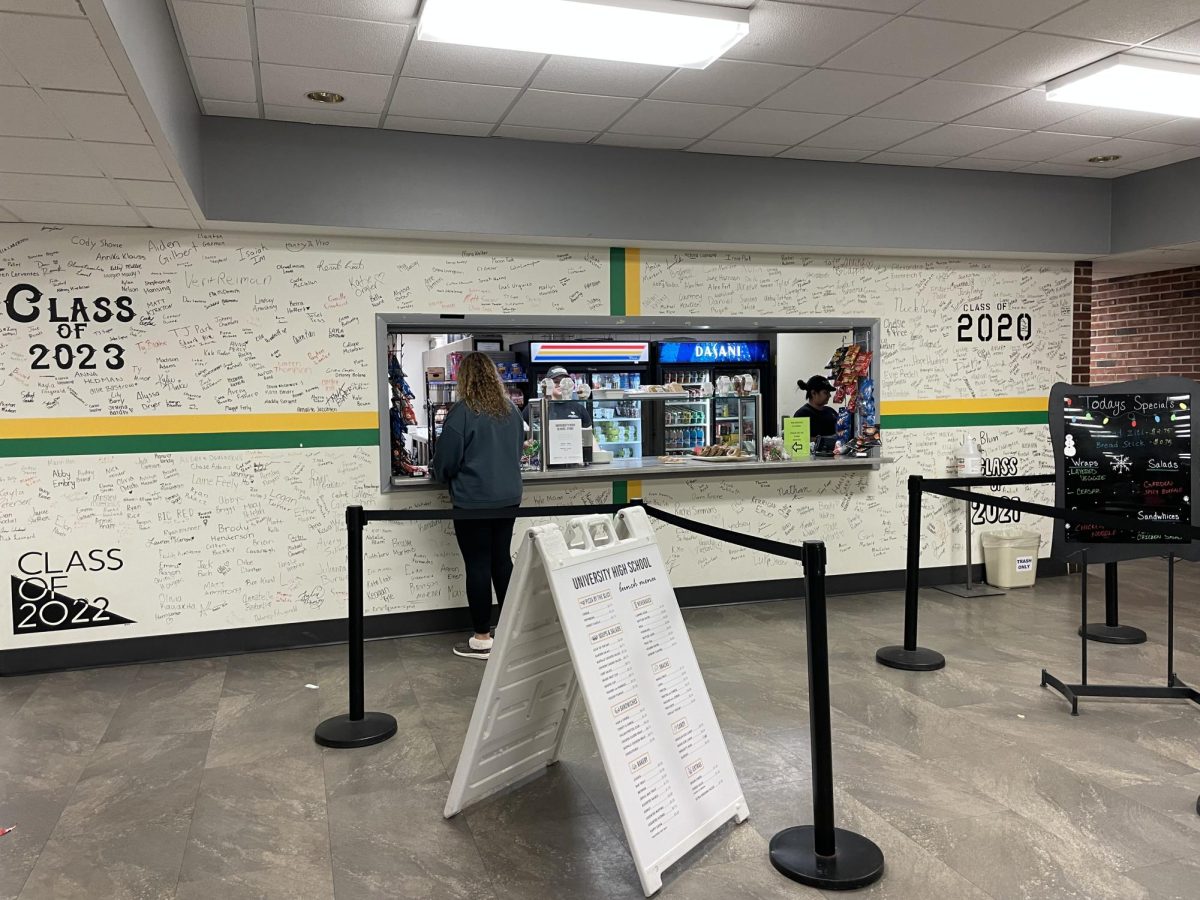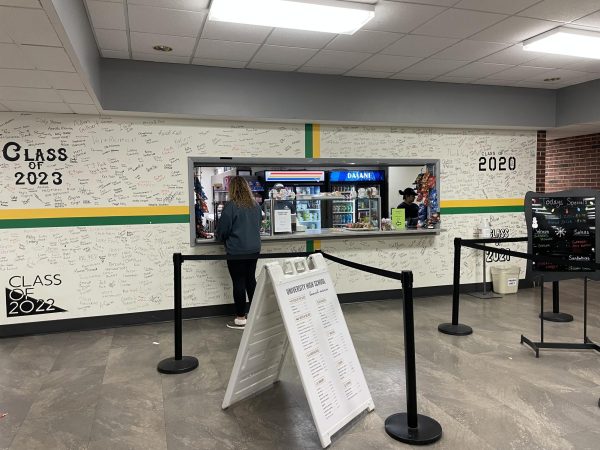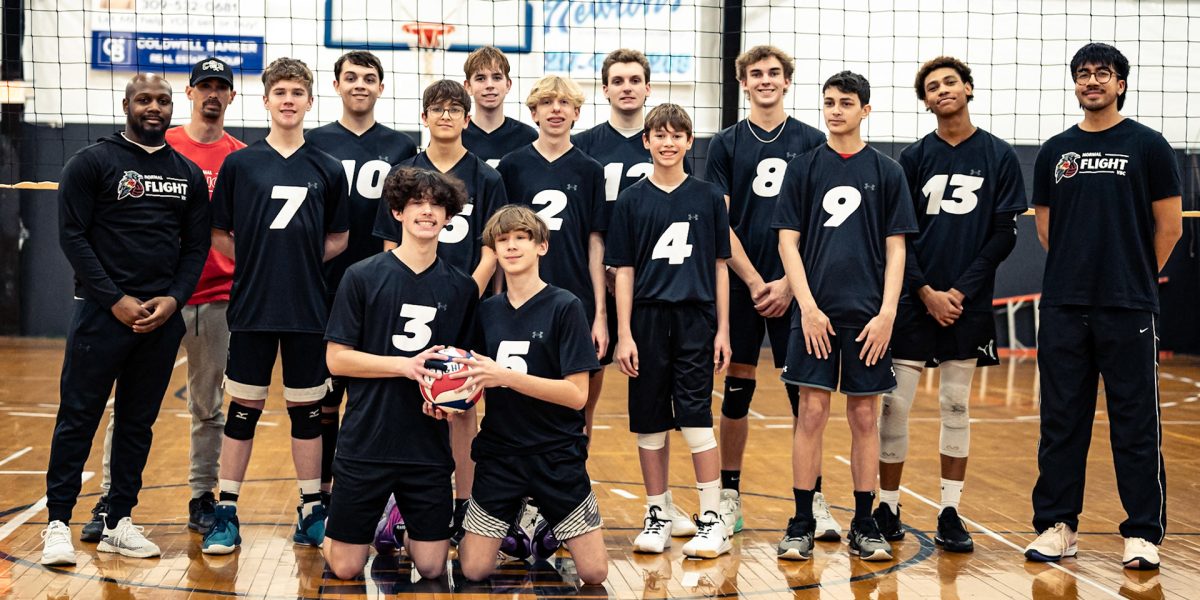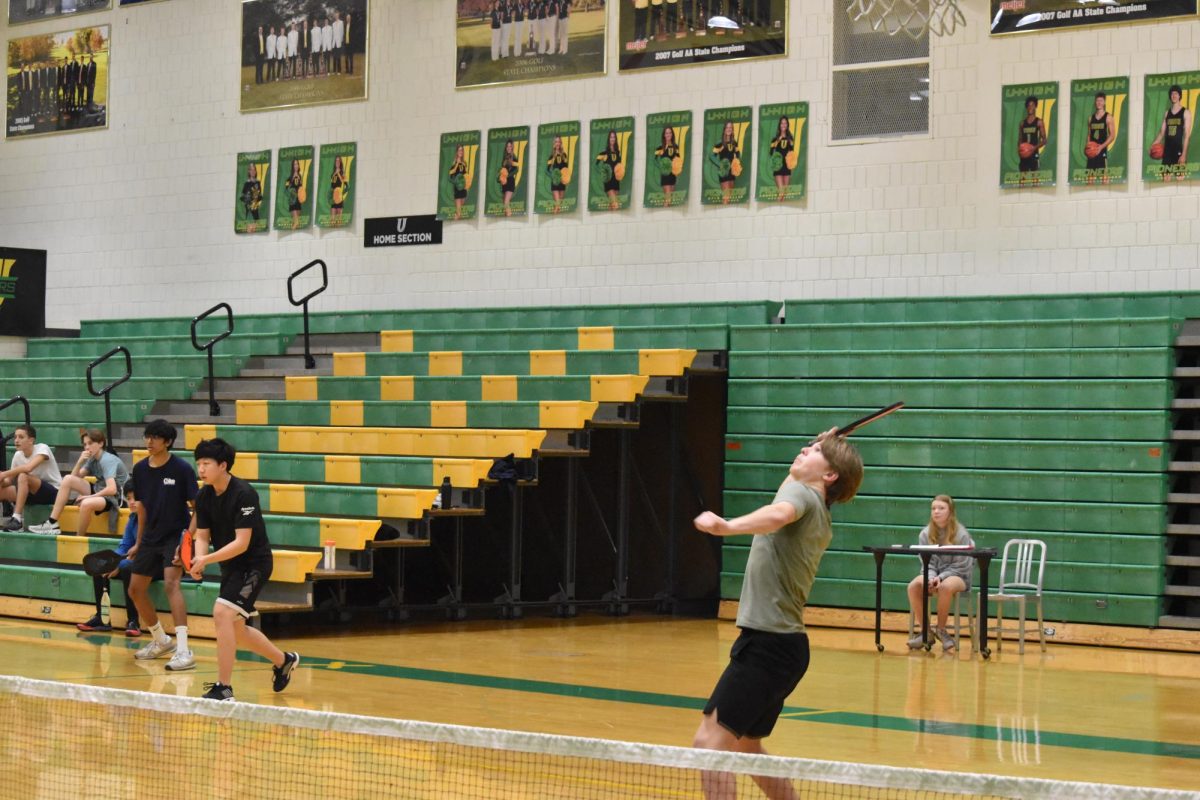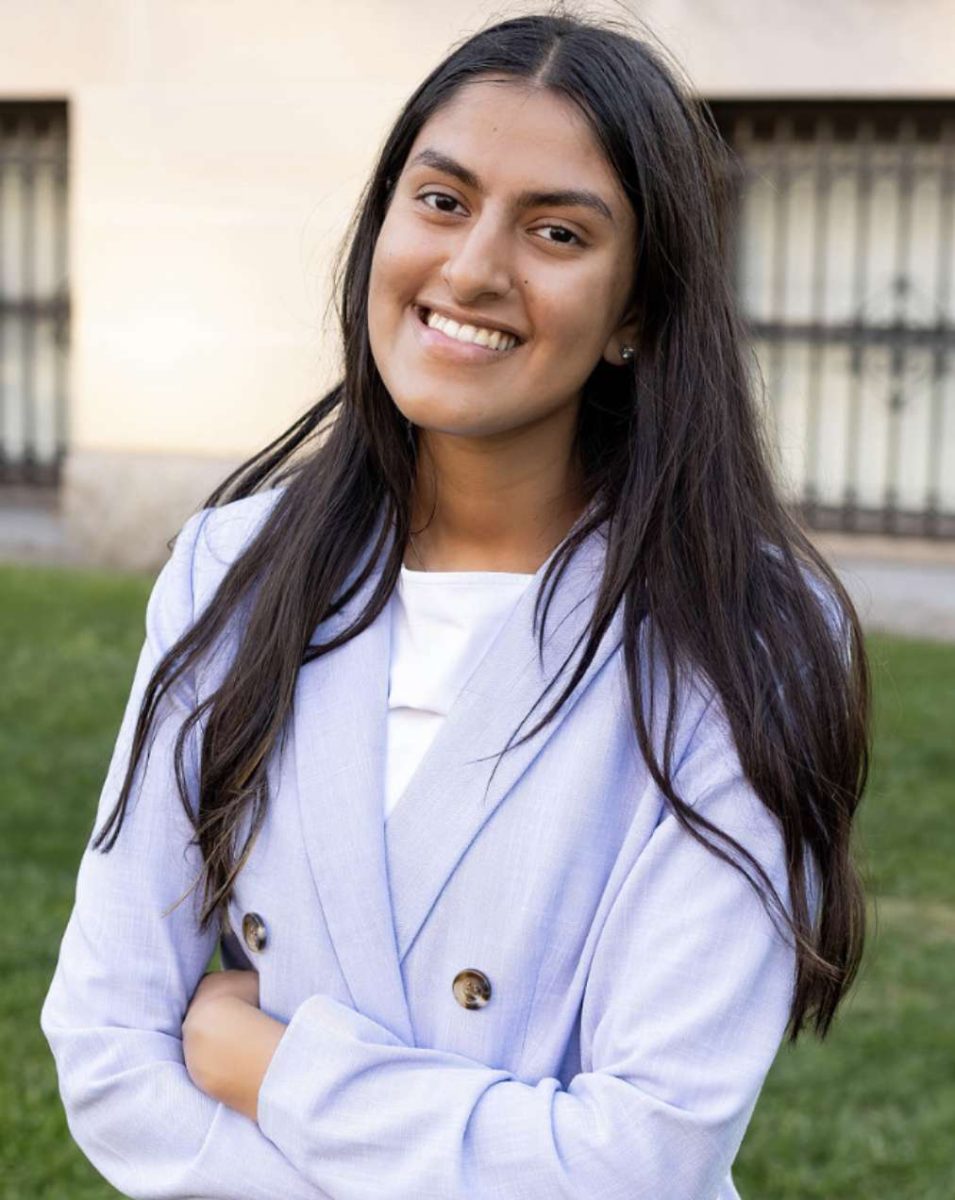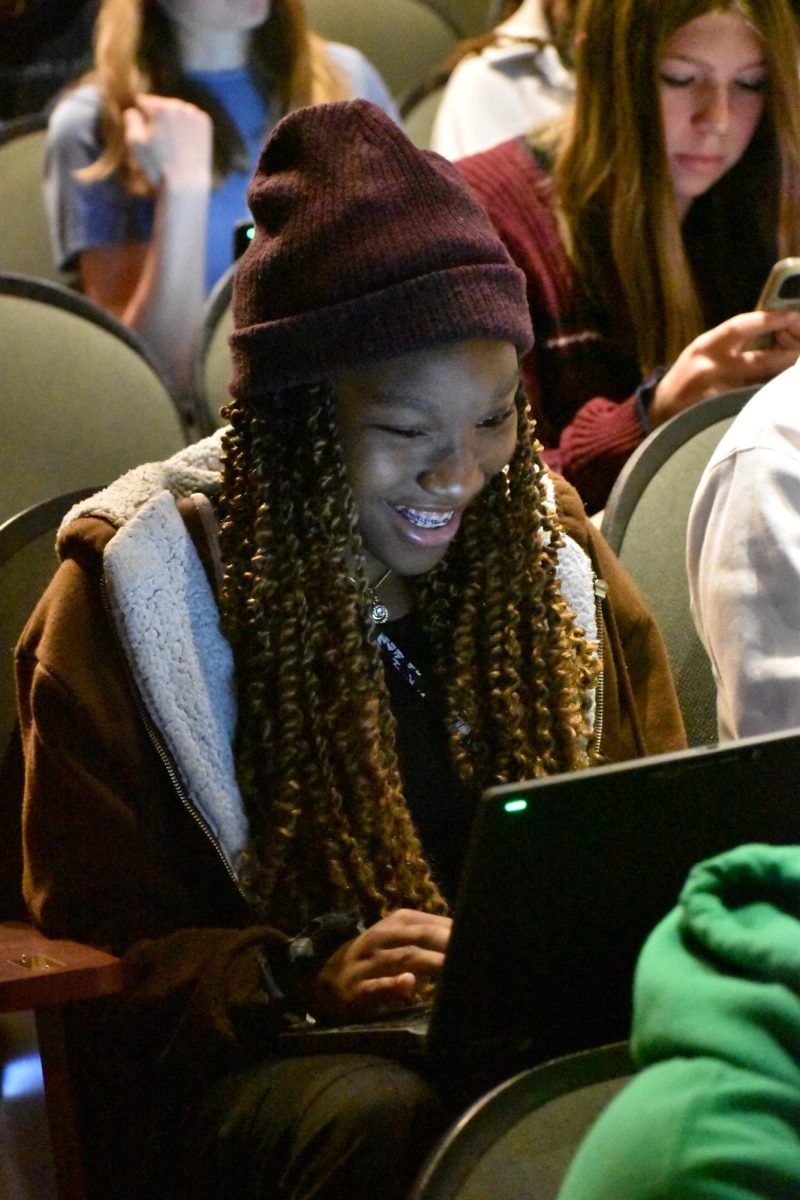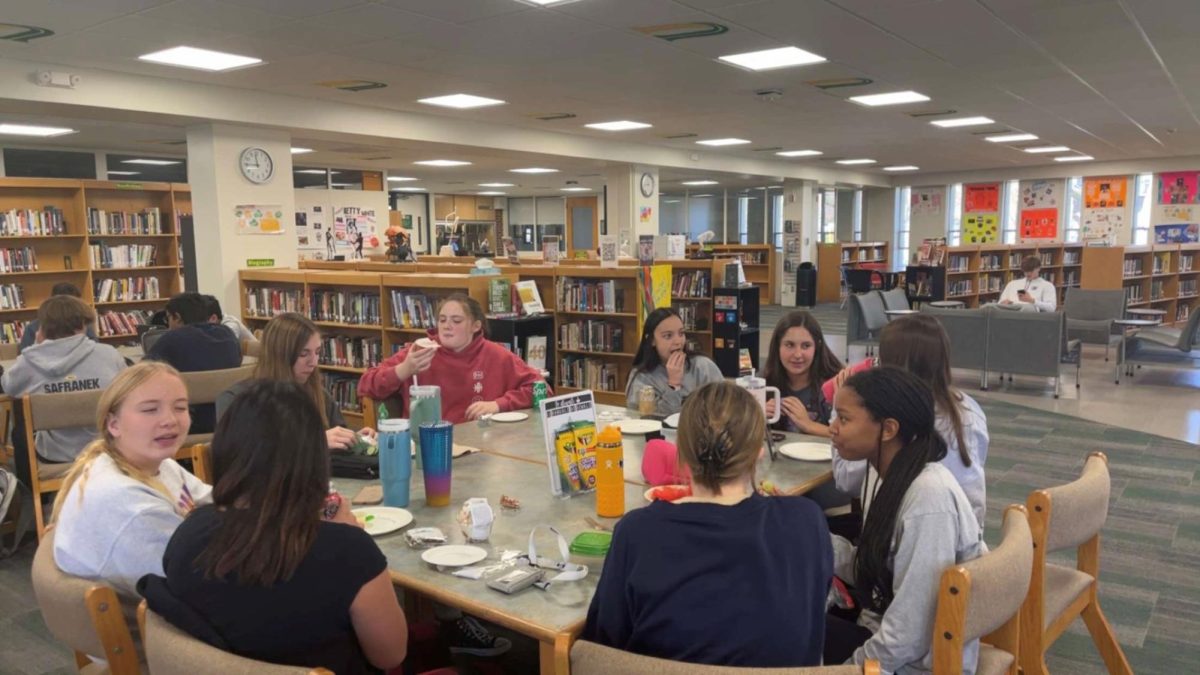Students and staff noticed a significant price increase in the items sold in the lounge, leading them to limit what they buy in the lounge. Even a little item like a salad dressing packet has increased in cost from 50 cents to $1.00.
“The prices are way too high,” Principal Andrea Markert said. “When you have to pay $2.00 for a donut it’s not a good day.”
The lounge offers two different types of wraps at a high price of $8.75. For comparison, a Starbucks wrap is $5.48. Additionally, students usually don’t get just one thing for their lunch. If you were to get a drink, a bag of chips, and a salad for lunch the total price would be $13.75.
For the students buying breakfast and lunch in the lounge on a daily basis, these prices add up quickly.
“It makes me want to go out to eat or pack my lunch instead of purchasing food from the lounge,” senior Jada Tinsley said.
So who gets to decide what the food prices are? It’s not U-High; ISU controls the school lunch prices. Megan Mundell is the general retail manager of the food area at ISU and is a part of the annual price evaluation that occurs every summer.
“We have done a yearly price adjustment analysis each year the school store has been open. Not every item will increase each year,” Mundell said. “Also, we will sometimes spread out a price increase over multiple years. For instance, if an item that costs $3.00 should cost $6.00 when our costing model is used, we may increase it $1.00 each year for three years.”
Mundell uses a number of factors to determine final pricing.
“The revenue derived from the sale of a food item has to cover all the expenses of the venue,” Mundell said. “So, those sales cover the cost of the product, the labor of the venue, the electricity, the equipment, the cleaning chemicals, etc. In food service, the two most expensive costs are food costs and labor costs. So, a basic formula is developed for expenses.”
Yet, at most public schools, students and families are not burdened with covering all of those costs because schools participate in the Federal Lunch Program (FLP). All public schools in Bloomington-Normal participate in the FLP except U-High. This includes our sister school, Metcalf.
The Federal Lunch program is a program run by the United States Department of Agriculture (USDA), and it offers funding for public and private schools. Deciding what schools take part in this program is up to the districts.
Sociology teacher and co-chair of the Diversity Committee David Harnish has been looking into getting U-High to take part in the FLP. He learned that Metcalf has been a part of this lunch program for over a decade.
“Since they [Metcalf] can do it we certainly can do it as well,” Harnish said.
A factor that has prevented U-High from participating in the past was the lack of space or resources, including warmers or ovens for food. However, that is no longer an issue.
“We have everything we need to do this lunch program,” Harnish said after several conversations with the FLP nutrition program coordinators, who are available specifically to guide schools through the application process. “We have support anytime there is a question, confusion about meeting standards, or just about what the menu will look like.”
If the school were to participate in the FLP, several nutrition guidelines would be required. One such guideline requires that a fruit cup or vegetable be served with every meal. The snack items in the vending machines would have to be removed or they would have to have a substitute that is healthier and has less sugar and fat in them.
“We would no longer be allowed to have bake sales of unhealthy things in the lounge,” Harnish said.
A disadvantage of joining the FLP may be the stricter food options, however, a key advantage is that the price of food every day will be no more than $4.00.
These reduced costs would benefit all students, however, Harnish said the most important impact the FLP could have is being able to provide free and reduced lunches for students who qualify, and the school could receive reimbursement for that cost.
“Currently 27 students qualify for free and reduced lunch: two for reduced lunch, 25 for free,” Harnish said. “We seem to offer it [free or reduced lunch] to some students, but it does not seem to be uniformly offered.”
If U-High moved forward in this process the first step would be an in-depth application process that takes a minimum of two to three months and must be finished before being fully approved. The school would then have to submit paperwork showing that the food served meets all of the nutrition guidelines.
“[We’d also have to] make sure to have a food program coordinator in charge of verifying we have met all of the requirements,” Harnish said. “This person exists but is not always in the building at U-High. Would have to re-organize a little bit.”
In addition, a food program could attract more student applications to the school. This is because many of the schools in other districts put a lot of effort into providing food for all of their students at a cheap price.
“This could be a way to attract more students from parts of the community that don’t apply to U-High,” Harnish said.
Another important change would be that FLP guidelines require the food program to be nonprofit, and the school currently profits from food sold in the lounge.
“It varies, usually between 5-15% of the profits go to the school,” Markert said. This money has been used to fund projects such as classroom furniture or unexpected expenses.
Sarah Parola facilitates the lunch program over at Metcalf and has acquired the expertise of operating the Federal Lunch Program within the university system.
“Metcalf is very different than most of your traditional schools as we do not cook any items in our kitchen,” Parola said. “All of the food is catered in from EMDH (Event Management, Dining, and Hospitality), so the only requirements upon us are the ones required by the health department and are not specifically regulated by the national school lunch program.”
As it stands, rising costs in the lounge may not be an inevitability and the administration is further investigating what the FLP might look like at U-High.
“I don’t know if I would support it [FLP] yet,” Markert said. “If it costs a lot to become a part of the program then I don’t know. If it is an easy thing and would lower prices for students, then I 100% support it.”
